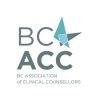Eating disorders are complex, behavioural mental health conditions that can significantly impact a person’s physical, social, and emotional well-being.
Characterized by persistent and severe disruptions of one’s eating-related behaviours, thoughts, emotions, and self-worth, eating disorders span a wide range of conditions.
While eating disorders impact millions of people worldwide, regardless of age and gender, women are most affected, particularly those between the ages of 12-35. If you or a loved one are struggling with the symptoms of an eating disorder, please know you are not alone.
In this blog, we’ll explore risk factors, three common eating disorders, and where those struggling with an eating disorder can seek treatment.
Understanding Common Causes and Eating Disorder Risk Factors
A risk factor is any condition, behaviour, or characteristic that could increase a person’s likelihood of developing a mental or physical health condition. Eating disorders typically stem from an underlying concern, such as poor self-esteem, traumatic experiences, unresolved psychological challenges, or emotional pain.
Research has identified a few common risk factors that span biological, psychological, and sociocultural arenas:
Biological Risk Factors
- People who have a first-degree relative (e.g., parent or sibling) with an eating disorder or any other mental health condition are more likely to develop an eating disorder themselves.
- Those who have a history of dieting or using other methods of weight control are at an increased risk.
- According to research, 15% of men and 39% of women with type one diabetes will develop an eating disorder at some point throughout their lives.
Psychological Risk Factors
- Research indicates perfectionism as one of the strongest risk factors for eating disorders.
- People who are prone to impulsivity, struggle with emotional regulation, have poor body image, or tend to avoid doing, feeling, or thinking about distressing things may be at a higher risk for developing an eating disorder.
- Personal history of substance use disorder or another mental health condition also increases a person’s risk of developing an eating disorder.
Social Risk Factors
- Weight stigma, which occurs due to stereotyping or discrimination based on someone’s weight, is dangerously pervasive today. Increased exposure to this stigma can lead to disordered eating.
- Being teased or bullied, particularly about one’s weight, is an emerging risk factor associated with eating disorder development.
- Loneliness, isolation, or limited social networks are common social risk factors associated with anorexia nervosa and binge eating disorder.
3 Common Types of Eating Disorders
Three of the most common types of eating disorders include anorexia nervosa, bulimia nervosa, and binge eating disorder, but there are many others.
These conditions can manifest in various ways, with distinct features and challenges as unique as those experiencing them.
#1 – Anorexia Nervosa
People struggling with anorexia nervosa typically self-starve, which generally results in extreme weight loss. According to the American Psychological Association, anorexia has the second-highest mortality rate of any psychological condition—the first being opioid use disorder.
Behaviours of anorexia typically stem from fear of gaining weight or becoming fat. There are two categories of anorexia nervosa:
- Restricting type: The person loses weight primarily through fasting, dieting, excessive exercise, or a combination of all three.
- Binge-eating/purging type: People with anorexia may also experience intermittent phases of binge eating and purging, or one or the other.
As a person’s condition progresses, their menstrual period may stop. They may also feel dizzy due to dehydration and experience muscle weakness, cold intolerance, and brittle hair or nails.
Other signs include constipation, bloating, heartburn, bone loss, stress fractures, irritability, poor concentration, fatigue, and depression or anxiety symptoms.
#2 – Bulimia Nervosa
Bulimia nervosa typically involves alternating between eating low-calorie, “safe” foods and binge eating higher calorie, “forbidden” foods.
Binge eating occurs when a person eats a significant amount of food in a short time due to a sense of lost control over what or how much they’re consuming. People typically binge eat beyond the point of fullness. Behaviours associated with binge eating are usually shrouded in secretive behaviours and feelings of shame, guilt, or embarrassment.
Binges usually occur at least once weekly, followed by a “compensatory behaviour.” The goal of this compensatory behaviour is to avoid weight gain and can span fasting, excessive exercise, laxative misuse, or vomiting. Like those struggling with anorexia, people who have bulimia are preoccupied with food-related thoughts and body image, which can significantly impact self-worth and self-esteem.
Signs that someone may have bulimia nervosa could include:
- Frequently going to the bathroom after eating
- Unexplained empty wrappers, food containers, or missing food
- Persistent sore throat and swelling in the cheeks
- Erosion of tooth enamel and dental decay
- Acid reflux or heartburn
- Misuse of diet pills, laxatives, or water pills (diuretics)
- Frequent, unexplained diarrhea
- Feeling dizzy due to dehydration brought on by frequent vomiting
Due to the purging behaviours associated with bulimia nervosa, severe physical complications can occur. While rare, these complications could include gastric rupture, esophageal tears, and cardiac arrhythmias.
#3 – Binge Eating Disorder
Similar to bulimia nervosa, people with a binge eating disorder diagnosis will experience episodes of binge eating. The difference is that with a binge eating disorder, there is not a regular purging period. Binge eating can negatively impact one’s health, leading to complications like diabetes, hypertension, cardiovascular disease, and obesity.
For someone to receive a binge eating diagnosis, they must experience a binging episode that is associated with a sense of lost control at least once per week for three months. The person must also exhibit at least three other features:
- Eating past fullness to a state of discomfort or nausea
- Eating faster than normal
- Eating large amounts of food even when they’re not hungry
- Eating alone due to embarrassment
- Feeling embarrassed, depressed, guilty, or disgusted with oneself after a binge
Seek Eating Disorder Treatment in Victoria, BC Today
While eating disorder treatment will depend on a person’s diagnosis and symptoms, it often involves psychotherapy, medical monitoring, nutrition education, and, at times, medication. Alongside professional care, self-care, a robust support system, and practical coping skills can also help manage eating disorder recovery.
At NeurAlive, our expert therapists specializing in eating disorders prioritize an individualized approach to holistic wellness. In a safe, nonjudgmental, and confidential space, we collaboratively develop treatment plans to address immediate symptoms of an eating disorder as well as underlying root causes.
In addition to our psychotherapy practice, we offer Dynamic Neurofeedback Brain-Training, a cutting-edge intervention that focuses on neural pathways associated with stress and cognitive function. It can promote relaxation, mental clarity, positive self-image, and healthier food relationships.
Contact us today to learn how the NeurAlive team can partner with you on your journey toward healing. Seeking support takes courage, and you are not alone.







